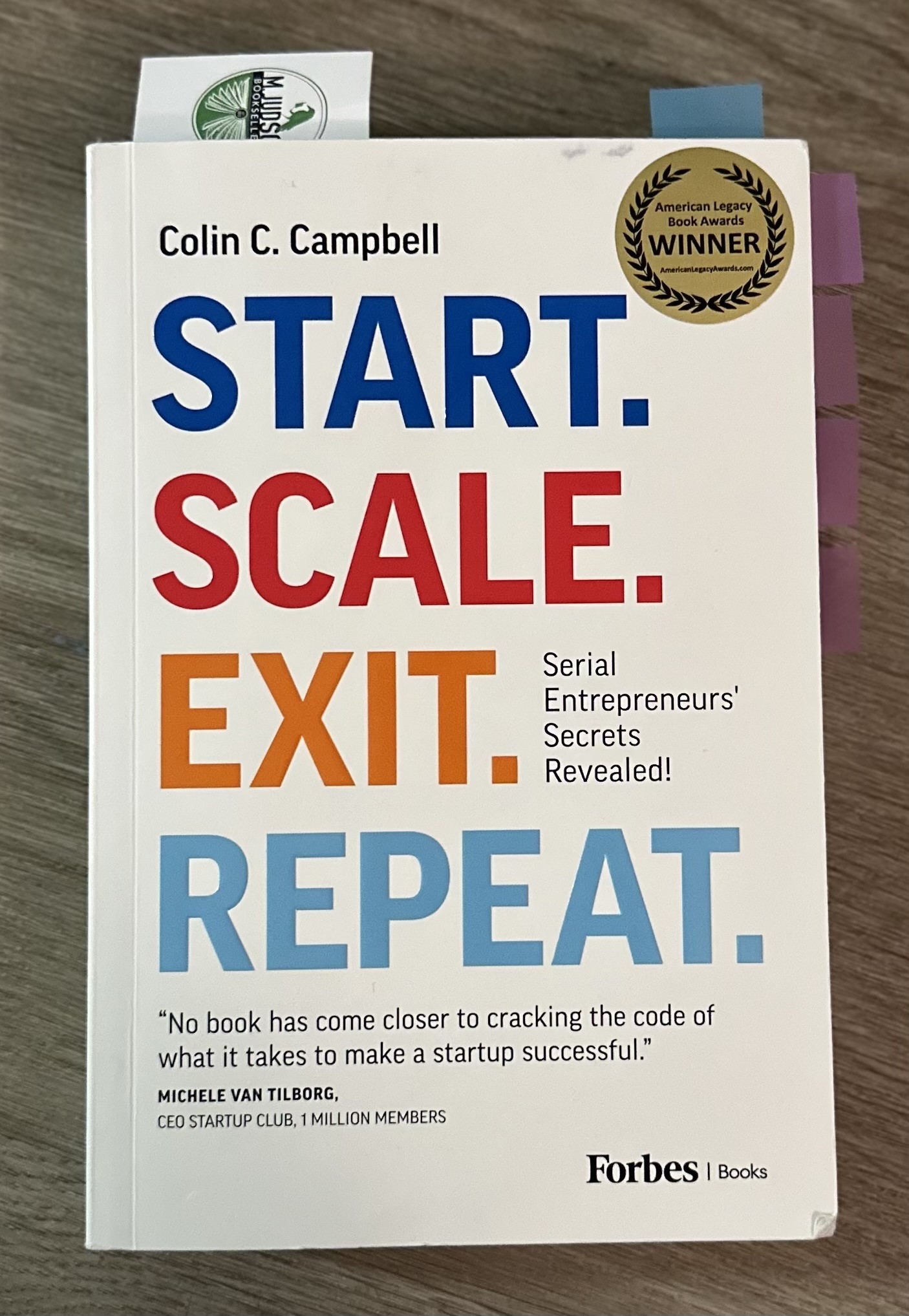Chapter 16 Breakdown: Why Startups Fail — And How You Can Avoid It
Series: Start. Scale. Exit. Repeat. Reflections | Author: Brent Parker, Resilience Repurposed LLC
Let’s face it—no founder likes to talk about failure. But as Colin C. Campbell points out in Start. Scale. Exit. Repeat., understanding why startups collapse is one of the fastest ways to avoid joining that statistic. In Chapter 16, he peels back the layers of bad hiring, flawed product-market fit, ignored warning signs, and poor funding decisions that quietly sabotage good ideas.
This post isn’t about doom and gloom—it’s about decoding failure so you can design your business to be more resilient from day one.
🚫 Failure Happens—But It’s Not Random
Campbell opens up about his own failed venture in blockchain tech, sharing how a combination of Silicon Valley hype, the wrong hires, and skipped systems led to a shutdown. He takes ownership of what went wrong—not just emotionally, but operationally. This isn’t just storytime; it’s a template for recognizing structural cracks before they become fatal flaws (Campbell, 2023).
🧩 The Six Hidden Reasons Startups Fail
- The company doesn’t solve a real problem. Like MoviePass, many startups create exciting features without validating if enough people care about the problem being solved.
- The wrong people are running the company. Even a great idea will crumble if led by mismatched leadership. Entrepreneurial vision can’t be outsourced.
- Red flags are ignored. Emotional investment makes it easy to overlook key warning signs. But those flags often predict collapse.
- They raise too little—or too much—money. Underfunding creates fragility. Overfunding can lead to waste, arrogance, or diluted control.
- There are too many cooks in the kitchen. Leadership confusion and partnership misalignment create internal gridlock that kills momentum.
- External forces strike. Even well-run companies can get crushed by outside events like the dot-com crash or COVID-19. But how you prepare can cushion the blow.
🧠 Human Error Is the #1 Culprit
Campbell doesn’t sugarcoat it: “The biggest factor in success and failure is human failure” (Campbell, 2023, p. 140). Whether it’s hiring too fast, scaling without systems, or ignoring your gut, most collapse points come down to judgment—yours or someone else’s. But that’s also where your greatest opportunity lies.
❤️ Failures Are Scars That Guide Us
From Walt Disney’s early cartoon rejections to Milton Hershey’s candy startup struggles, Chapter 16 reframes failure as a rite of passage. “Startup failures are the scars of our past that guide us forward in our new ventures” (Campbell, 2023, p. 141). You don’t have to fear failure—but you do have to learn from it.
💡 Final Takeaway:
Failure isn’t random—it’s a pattern. Chapter 16 teaches you how to spot it early, take responsibility when things go sideways, and turn losses into future-proof systems. Learn from Colin’s scars so you don’t have to earn your own the hard way.
🔁 Coming Next: Chapter 17 – How to Vet a Business Idea
We’ll dive into the checklist that separates ideas from real businesses and walk through the rigorous testing process Colin Campbell uses before he bets on anything new.
💬 Share This With a Future Founder
Tag someone who’s launching their first business—or recovering from their last one. This post could save them months of pain and thousands of dollars.
📬 Subscribe to Resilience Repurposed
Want first access to future chapters, bonus insights, and tactical guides for veteran entrepreneurs? Subscribe at Resilience Repurposed or follow Brent on LinkedIn.
📚 References (APA Style)
Campbell, C. C. (2023). Start. Scale. Exit. Repeat. Wiley.
Bryant, S. (2022, November 28). How Many Startups Fail and Why? Investopedia.
Mitchell, B. (2022, November 22). 82% of Small Businesses Fail Because of Cash Flow Problems. U.S. Bank.
